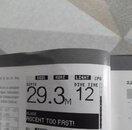I don’t think computers have anything to do with bad diving. Bad diving to me means crashing the bottom, rototilling, not paying attention to air supply, horrendous buoyancy control, yo yo diving, elevator diving, overly buddy dependent and clingyness, ready to panic at any moment, very bad general skills, etc.
Being computer dependent just means they are dependent on technology. If they used tables they would be dependent on their depth gauge and timing device plus needing to remember NDL time, unless they have it written down. What’s the difference?




